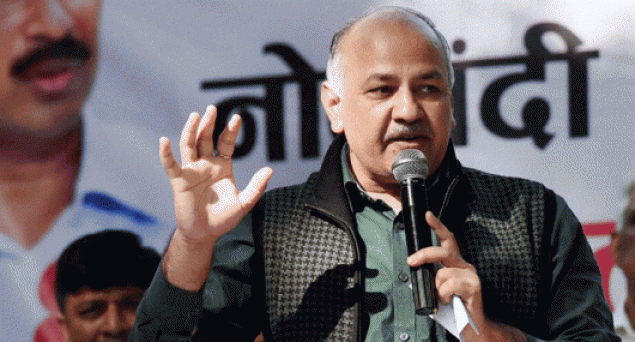Vishal Narayan,
New Delhi, Feb 8: Four months after a meeting with Manish Sisodia, the Deputy Chief Minister of Delhi and state Education Minister, an organisation that represents Budget Private Schools (BPS) says the problems facing such low-cost private schools in the city are far from being addressed and these schools remain just as vulnerable.
The National Independent Schools Alliance (NISA), a platform that brings together budget private schools in the country, held a meeting with Sisodia on September 28.
“He (Sisodia) had promised us his support then and even asked us to send suggestions for a Review Committee, which he intended to form to work on our issues…. We haven’t heard from him since then despite several attempts at reaching him,” Amit Chandra, Policy Advisor, NISA, told IANS.
“We feel the Deputy Chief Minister used us to grant himself a platform to make boastful claims. It has been four months since our conference on September 28, where representatives of several state Chapters of NISA had come together and presented him with an eight-point Charter,” he added.
Despite repeated attempts, Sisodia’s office and other officials in the education department did not respond to queries from IANS.
Budget private schools are an intermediate category of schools which cater to a large number of children. Schools which have a yearly budget of equal to or less than what Delhi government spends yearly on a child, come under this bracket.
According to Chandra, about 45 per cent of the total number of schools are private in Delhi, of which only five to ten per cent are what we call big and elite schools, like DPS, Modern, Goenka, etc., while the rest are budget private schools or BPS — the schools of choice for local lower and lower-middle class people.
He says that though the BPS schools charge a nominal fee from students, they get no succour from the state government. “Instead, they are encumbered with several restrictions imposed on them which are too back-breaking given their frugal means and an equally thin revenue,” he added.
“As entities, we are considered not-for-profit organisations, since we are registered under the Registration of Societies Act. All private schools are registered as non-profit entities, for that matter. But when it comes to charging of electricity, water bills, and property tax, we are charged as commercial entities,” Chandra said, adding that big schools can afford to continue like this, but small ones cannot.
He also blamed a complex bureaucratic maze for their woes, which every such school has to go through before it comes to become operational.
“One needs as many as 50 licences from an equal number of departments — labour, DDA, water, electricity, etc — to start a private school. We had demanded a ‘single window’ system to bypass the bureaucratic tangle, which is a big drain on finances and spirit, but Mr Sisodia expressed his helplessness then in considering this, citing his limited authority,” said Chandra.
There’s also a social angle linked to the overall state of the BPS.
Chandra points out that most number of drop-outs in India occur after Class 5, which he says is mainly because there is a shortage of BPS catering to above Class 5 students, and many parents can ill-afford to send their kids to distantly located big schools for higher classes.
Another major impediment to BPS is the land norms, which Chandra deems “unfeasible” and undermining the interest of local children.
“Schools which teach students up to fifth standard are required to be built on a land space of 200 square yards, while the norm for those up to Class 8 is 800 square yards.
“Since it’s already very tough to find land in Delhi, and near impossible to enlarge a piece of land where a school has already been built, most children are faced with no choice but to drop-out after fifth standard, since they have no money to seek further options which are way more expensive,” Chandra explained.
The solution to this hurdle, schools say, is to give recognition to the schools on the basis of floor area, which, if implemented, can contribute to building of at least 90,000 more class rooms (from 3,000 BPS in Delhi) and accommodate more number of children from Economically Weaker Sections (EWS).
Another aid which was sought from Sisodia during the September 28 conference was the forming of a school financing committee to partially grant aid and finance at lower rate to these schools.
“Since as non-profit entities we are not entitled to take loans from banks, we asked for a financing committee for schools, quite like on the lines of Higher Education Financing Agency (HEFA) which finances higher learning institutes,” Chandra said.
He said the “complete U-turn” of the government has been “disheartening”.
Private schools receive no aid from the state government, except the aid in reimbursement which they receive for accommodating 25 per cent of children from the EWS category under Right to Education (RTE).
(Vishal Narayan can be reached at [email protected])
(IANS)





